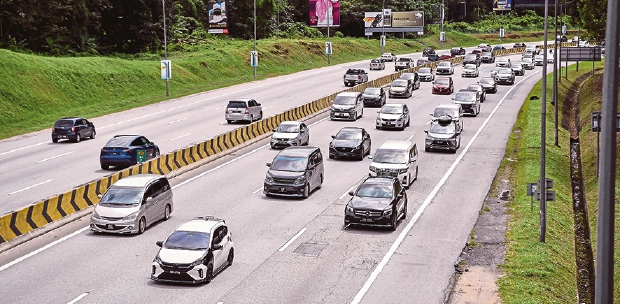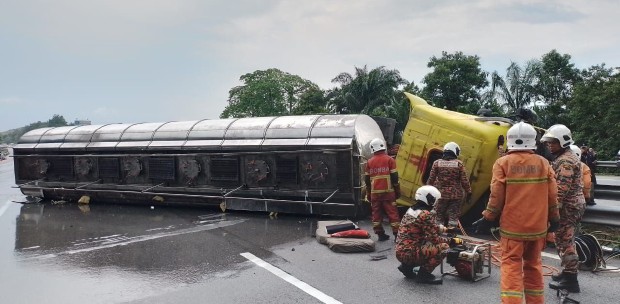The creaking bus groans, and the weary soul moans. The driver struggles with the long greasy gear stick, the conductor is tangled in a human slick.
This writer grips a pole tightly, his body drips with sweat embarrassingly.
But the journey on the bus from Puduraya to Kajang is not poetry in motion.
Far from it: It is an experience of atrophy in imagination. The addled brain cannot muster anything beyond "Go home".
It begins from the moment a tired 9-5 worker hurries down the steel staircase to the assembly of buses. There, exhaust fills the air, exhausted women and men can only stare.
There are Foh Hup buses at the other platforms, too, ingesting people into their dreary forms. Green and white behemoths they are, loud and cranky like a crazy czar.
To get into a bus after 5pm is hard, for queues do not exist in Puduraya's heart. Some people climb in through the emergency door, others battle their way through the front like a boor. Not ladies or the elderly first, but the fittest. Darwin's insight. Bah!
Standing, never sitting. That is the writer's fate, and of many others, most of the time. And so it is today.
The bus crawls out of Puduraya, and falls into a gridlock. In Jalan Pudu, in Jalan Cheras, and quite a bit more.
The journey starts at 6pm. It ends at 7.30pm. Dusk is ebbing and darkness' reign is beginning across the land. The writer gets home at 8pm, a full two hours after struggling into the bus.
That was in 1989, when Tun Dr Mahathir Mohamad was prime minister, the Berlin Wall had fallen and newspapers were still king.
More than 30 years later, in a world vastly different, but with the same human madness, the writer heads home again to Kajang. It is the evening of May 10. He gets into a car that's as spiffy as he thinks he is.
He is also as weary as he was decades ago when he clambered down those Puduraya steps. But the white-as-snow car is far more comfortable and cleaner than the rickety bus.
Off he goes into the arteries of KL, and onwards to Kajang. In Jalan Bangsar, the Federal Highway, and the North-South Expressway.
The journey begins at 5.50pm. It ends at 7.35pm. Dusk is ebbing, as it was 40 years ago. So has the strength of the writer, whose body is frozen and mind frazzled by the hypnotic dance of interminable traffic.
A journey of at least two hours — most of the time — in 1989. A drive of at least one hour and 45 minutes — many times — in 2023, when a frightening wall between East and West is forming, when Dr Mahathir remains a political player, when newspapers are fading and the failure of US debt-ceiling talks will cause interest rates to shoot up.
Roads are now wider, longer and everywhere. Trains, buses and cars are spreading like a web across the land. Thus is progress made. And measured.
Neither sarcasm nor criticism is intended. But resigned acceptance may be inferred. The future will be better, the writer wishes.
His creaking bones cannot wait that long though. Like the once-shuddering Foh Hup buses that are no more, he will be gone long before the jams become a footnote in human history.
* The writer is NST production editor






